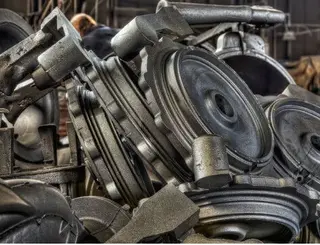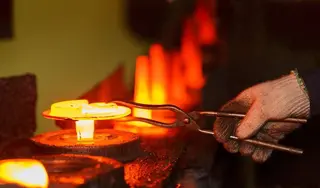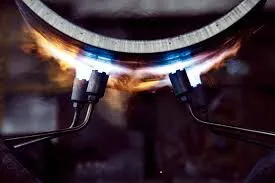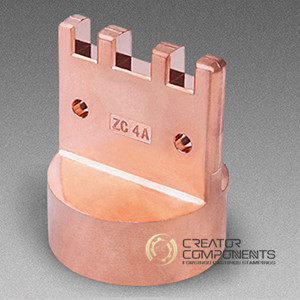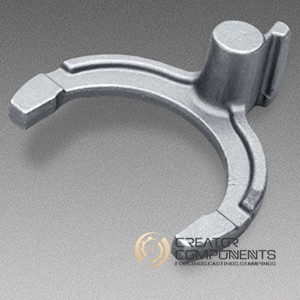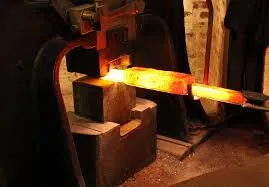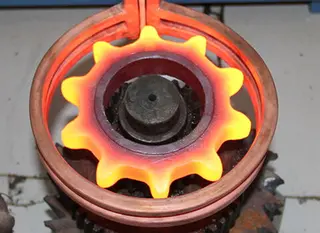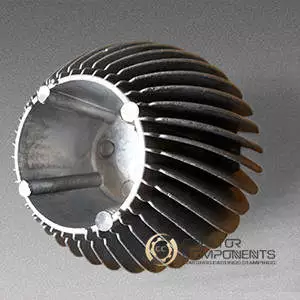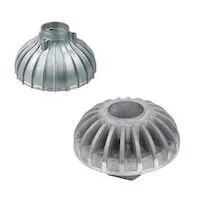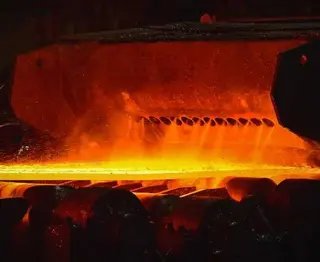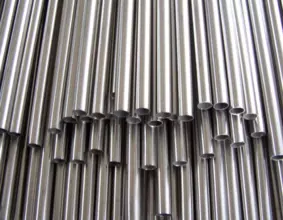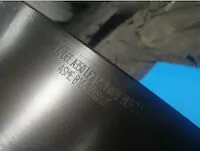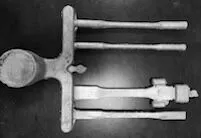Heat Treatment of Cast Iron: Key Process to Enhance Performance
In the field of mechanical manufacturing, cast iron is widely used due to its excellent casting properties, good vibration damping, and relatively low production costs. However, the properties of cast iron are not fixed. Through heat treatment processes, its mechanical properties can be significantly improved to meet the requirements of various working conditions. This article will explore in detail the various methods of cast iron heat treatment, their principles, and applications.
Basic Objectives of Heat Treatment
The primary objective of cast iron heat treatment is to improve the matrix structure of the cast iron, thereby enhancing its mechanical properties and eliminating internal stresses generated during the casting process. It is important to note that heat treatment cannot change the shape and distribution of graphite in cast iron. For example, flake graphite or spheroidal graphite will remain unchanged in size and distribution after heat treatment.
Stress-Relief Heat Treatment
During the casting process, cast iron components may develop internal stresses due to uneven cooling rates. If these stresses are not effectively eliminated, they can lead to deformation or even cracking of the parts during subsequent machining and use.
1. Artificial Aging
In the casting process, the cooling rate of cast iron components varies from the surface to the interior, which can easily lead to internal stresses. If these stresses are not eliminated, the castings may deform or crack during machining and use. Artificial aging is an effective method for relieving internal stresses. The specific procedure involves heating the casting to approximately 500-560°C, holding it at this temperature for a certain period, and then cooling it slowly in the furnace to room temperature. This method can effectively release internal stresses and improve the dimensional stability of the casting in a relatively short time.
2. Natural Aging
Natural aging involves storing cast iron components outdoors for 6 to 18 months to allow the stresses to be released naturally. Although this method can partially relieve stresses, it is time-consuming and inefficient, and is therefore rarely used nowadays.
Heat Treatment to Improve the Properties of Ductile Iron
Ductile iron, known for its excellent mechanical properties and good casting properties, is widely used in mechanical manufacturing. However, to meet the requirements of various working conditions, it often needs to be further improved through heat treatment.
1. Elimination of White Cast Iron by Annealing
During the casting process, ordinary gray cast iron or ductile iron castings may develop white cast iron on the surface or thin walls due to rapid cooling, making it impossible to machine the castings. To eliminate white cast iron and reduce hardness, these castings are often reheated above the eutectoid temperature (usually 880-900°C) and held for 1-2 hours (if the Si content in the cast iron is high, the time can be shorter). During this process, cementite decomposes into graphite, and then the casting is slowly cooled to 400-500°C before being air-cooled out of the furnace. It should be noted that the cooling rate should not be too slow near the eutectoid temperature of 700-780°C to prevent excessive transformation of cementite into graphite, which would reduce the strength of the casting.
2. Annealing of Ductile Iron
During the casting process, ductile iron has a high tendency to form white cast iron and also has high internal stresses, making it difficult to obtain a pure ferrite or pearlite matrix. To improve the ductility or toughness of the casting, high-temperature annealing is commonly used. The specific process involves reheating the casting to 900-950°C and holding it for a sufficient period, then cooling it in the furnace to 600°C before air-cooling it out of the furnace. During this process, the cementite in the matrix decomposes into graphite, and the graphite precipitated from austenite gathers around the original spheroidal graphite, converting the matrix entirely into ferrite. If the as-cast structure consists of a (ferrite + pearlite) matrix and spheroidal graphite, to improve toughness, only the cementite in the pearlite needs to be decomposed and converted into ferrite and spheroidal graphite. For this purpose, the casting is reheated to the eutectoid temperature range of 700-760°C, held, and then cooled in the furnace to 600°C before air-cooling it out of the furnace.
3. Normalizing of Ductile Iron
The purpose of normalizing ductile iron is to convert the matrix structure into a fine pearlite structure, thereby increasing the strength and wear resistance of the casting. The process involves reheating the ductile iron casting with a ferrite and pearlite matrix to a temperature of 850-900°C, where the original ferrite and pearlite are converted into austenite, and some of the spheroidal graphite dissolves into the austenite. After holding at this temperature, the casting is air-cooled, and the austenite transforms into fine pearlite, thus increasing the strength of the casting.
4. Quenching and Tempering of Ductile Iron
When ductile iron castings are used as bearings, higher hardness is required. Quenching followed by low-temperature tempering is commonly used. The process involves heating the casting to a temperature of 860-900°C, holding it to fully austenitize the original matrix, then cooling it in oil or molten salt to achieve quenching, followed by tempering at 250-350°C. After this treatment, the original matrix is converted into a tempered martensite and retained austenite structure, while the original spheroidal graphite shape remains unchanged. The treated casting has high hardness and certain toughness, while retaining the lubricating properties of graphite, and its wear resistance is significantly improved.
5. Tempering of Ductile Iron
For shaft components, such as the crankshafts and connecting rods of diesel engines, the castings are required to have a combination of high strength and good toughness. Tempering treatment is commonly used. The process involves heating the casting to a temperature of 860-900°C and holding it to austenitize the matrix, then cooling it in oil or molten salt to achieve quenching, followed by high-temperature tempering at 500-600°C. After this treatment, the casting obtains a tempered sorbite structure (usually with a small amount of quenched blocky ferrite), and the original spheroidal graphite shape remains unchanged. The treated casting has a good match of strength and toughness, suitable for the working conditions of shaft components.
6. Isothermal Quenching of Ductile Iron
When the casting has a complex shape and requires high comprehensive mechanical properties, isothermal quenching is an effective treatment method. The process involves heating the casting to 860-920°C, holding it for a certain period (about twice that of steel), then quickly placing it into an isothermal salt bath at a temperature of 250-350°C for half an hour to an hour and a half of isothermal treatment, and finally air-cooling it. After isothermal quenching, the matrix structure of the casting is converted into a tough lower bainite structure, with an ultimate tensile strength exceeding 1100MPa and an impact toughness AK≥32J.
Surface Heat Treatment of Cast Iron
The purpose of surface heat treatment of cast iron is to improve the wear resistance of cast iron components. Induction heating quenching, laser heating quenching, and soft nitriding processes used for steel are also applicable to cast iron. For example, laser heating quenching or soft nitriding treatment is commonly used for diesel engine and internal combustion engine cylinder liners. Laser heating of cast iron components is very fast, and after air-cooling, a hardened layer of high-carbon martensite structure is formed on the workpiece, greatly enhancing its wear resistance. After soft nitriding treatment, a high-hardness e-phase compound (Fe₂₋₃N) layer is formed on the surface of the casting, not only with high hardness but also with a low friction coefficient, thus greatly improving the wear resistance of ductile cast iron.
Specific Methods of Ductile Iron Heat Treatment
There are various heat treatment methods for ductile iron, including annealing, normalizing, quenching and tempering, tempering treatment, and isothermal quenching. Each method has its own characteristics and is suitable for different application scenarios and performance requirements.
1. Annealing
Annealing is generally carried out to obtain a ferrite matrix, improve its plasticity and toughness, enhance machinability, and eliminate casting internal stresses. The high-temperature annealing process involves heating the casting to above the eutectoid temperature range, i.e., 900-950°C, holding it for 2-4 hours to allow the casting to undergo the first stage of graphitization, then slowly cooling it in the furnace to 600°C to allow the casting to undergo intermediate and second-stage graphitization, and finally air-cooling it out of the furnace. The low-temperature annealing process involves heating the casting to near the eutectoid temperature range, i.e., 720-760°C, holding it for 2-8 hours to allow the casting to undergo the second stage of graphitization, then slowly cooling it in the furnace to 600°C, and finally air-cooling it out of the furnace.
2. Normalizing
Normalizing converts the mixed matrix structure of the casting into a pearlite matrix, thereby increasing its strength and wear resistance. High-temperature normalizing involves heating the casting to above the eutectoid temperature range, usually 880-920°C, holding it for 1-3 hours to fully austenitize the matrix structure, then air-cooling it out of the furnace to obtain a pearlite matrix due to rapid cooling within the eutectoid temperature range. Low-temperature normalizing involves heating the casting to within the eutectoid temperature range, i.e., 840-860°C, holding it for 1-4 hours to partially austenitize the matrix structure, then air-cooling it out of the furnace. This method improves the toughness and plasticity of the casting but results in lower strength.
3. Isothermal Quenching
Although normalizing of ductile iron is widely used, when the casting has a complex shape and requires high comprehensive mechanical properties, normalizing treatment alone is often insufficient to meet technical requirements, and isothermal quenching is usually adopted instead. The process involves heating the casting to 860-920°C, holding it for a certain period (about twice that of steel), then quickly placing it into an isothermal salt bath at a temperature of 250-350°C for half an hour to an hour and a half of isothermal treatment, and finally air-cooling it.
4. Tempering Treatment
For castings subjected to complex stresses, with large cross-sectional dimensions, and requiring high comprehensive mechanical properties, if normalizing or isothermal quenching cannot meet the above requirements, tempering treatment (quenching + high-temperature tempering) is often used. The quenching and holding times for tempering treatment are essentially the same as for isothermal quenching, i.e., the heating temperature is 860-920°C. To prevent cracking during quenching cooling, oil cooling is generally used instead of water cooling for castings with complex shapes. After quenching, the microstructure consists of fine lamellar martensite and spheroidal graphite. The casting is then reheated to 550-600°C and tempered for 2-6 hours. Ductile iron can undergo various heat treatments, such as QT400 can be annealed, and QT700 can be normalized and tempered, but it is best to perform normalizing treatment before induction heating surface quenching.
Conclusion
Heat treatment of cast iron is an important technological means. By changing the matrix structure of cast iron, its mechanical properties can be significantly improved to meet the requirements of various working conditions. Whether it is artificial aging and natural aging to eliminate internal stresses, or annealing, normalizing, quenching, tempering, tempering treatment, and isothermal quenching to improve performance, or surface heat treatment to enhance wear resistance, all play a key role in optimizing the performance of cast iron components. However, it should be noted that the thermal conductivity of cast iron is poorer than that of steel, and the presence of graphite leads to higher notch sensitivity than steel. Therefore, the cooling rate (especially during quenching) must be strictly controlled during the heat treatment process. By reasonably selecting the heat treatment process, the advantages of cast iron can be fully utilized, enabling it to be more widely applied in the field of mechanical manufacturing.
Send your message to this supplier
Related Articles from the Supplier
Heat Treatment Process of Stainless Steel Forgings
- Jul 25, 2024
Common Misunderstanding of Heat Treatment
- Aug 14, 2024
Vacuum Heat Treatment Used for Mold
- Jan 15, 2016
Quenching Process by Remaining Heat from Forging
- Jun 16, 2015
Related Articles from China Manufacturers
Tips for Heat Treatment of Nodular Cast Iron
- Sep 16, 2015
Effect of Heat Treatment on Die-cast Aluminum Alloys
- Jun 24, 2024
Related Products Mentioned in the Article
Supplier Website
Source: http://www.forging-casting-stamping.com/heat-treatment-of-cast-iron-key-process-to-enhance-performance.html

